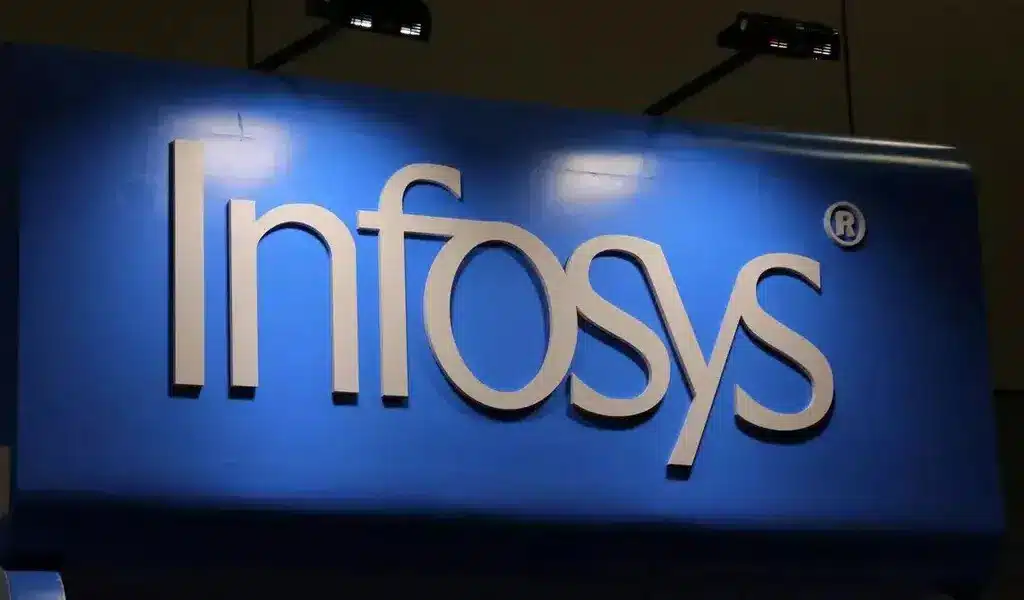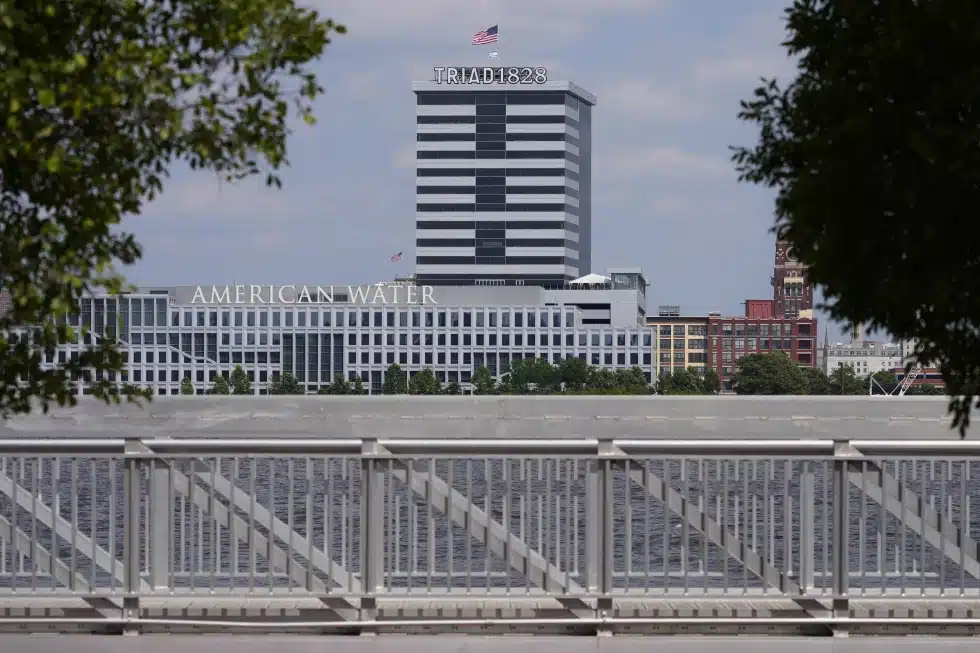Business
Thai Baht Extends It’s Gains Crossing Over 32 US Dollar Benchmark

The baht could further appreciate to 31.75 baht against the dollar next week
–
BANGKOK – The Thai baht extended its gains on Friday, trading at below 32 to the US dollar and ending the first two weeks of the year up 2%, while exporters have asked the central bank to take measures to put the baht in line with its trade counterparts to retain a competitive advantage.
The Thai baht’s strength since early last year could be due to the dollar’s retreat and Thailand’s current account surplus, while capital flow to portfolio investment is still minimal, said Chantavarn Sucharitakul, assistant governor for corporate strategy and relations at the Bank of Thailand.
The local currency is moving in line with regional peers and volatility is moderate, Mrs Chantavarn said after a meeting on Friday with the Thai National Shippers’ Council (TNSC).
Foreign investors cashed out of Thai shares at a net 7.24 billion baht year-to-date, according to the Stock Exchange of Thailand (SET). Net foreign inflows into Thai bonds reached 47 billion baht as of Jan 11, the Thai Bond Market Association said.

–
The baht at one point on Friday rose to 31.91 against the greenback, firming 2.1% year-to-date, before slipping to 31.96 in late trade.
In 2017, the baht was the second-best gainer in the region after the South Korean won, with the former up 10% and the latter up 11%.
Exporters and business operators have fretted over the baht’s rapid gain, requesting the meeting with the central bank and setting up a committee tasked with monitoring the currency’s movement.
The TNSC recently estimated that every one-baht rise against the dollar would cause a loss of 230 billion baht worth of export income, while the spillover effect from the loss would mean 791 billion worth of liquidity disappearing from the economic system.
Mrs Chantavarn said the central bank has intervened periodically when the baht’s strength was detrimental to the country’s economy to alleviate the effects on business operators.
She said the current rise could be attributed to the upsurge in foreign reserves last year.
The central bank’s intervention is not aimed at making Thailand gain a trade advantage against other countries or resist market forces, she said, adding that any action would be intended to help the private sector adjust.
The central bank reported that Thailand’s foreign reserves climbed to US$204 billion (6.5 trillion baht) as of Jan 5 from $202.6 billion at the end of last year and $171.9 billion at the end of 2016.
Amid high uncertainty over the trade policies of major economies and geopolitical tensions, the Bank of Thailand agreed to coordinate to support and promote business operators to hedge against foreign exchange risks or shift to quote prices in terms of baht or other currencies moving in line with the baht instead of the US dollar, she said.
Almost 80% of operators still stick to quoting their product prices in dollar terms, but the US accounts for less than 20% of Thai trade, she said.
Moreover, operators who are liable for foreign-currency-denominated debt repayment can protect their businesses against exchange-rate fluctuations by opening a foreign currency deposit account.
Mrs Chantavarn said the central bank has joined with commercial banks to launch an FX options project to help small and medium-sized enterprises (SMEs) pay a lower fee when hedging against risks.
Some 2,000 SME operators have received coupons, which can be used to buy options or lock in currency rates to hedge against foreign exchange risks on export value totalling $200 billion since the scheme kicked off late last year.

The Bank of Thailand and the TNSC have agreed to widen accessibility of the FX options project to the council’s members. Operators have been urged to exploit the stronger baht by importing machinery and equipment to upgrade their productivity, slim down operating costs and add value to their products to beef up competitiveness, she said.
TNSC chairwoman Ghanyapad Tantipipatpong said after meeting central bank officials that the country’s economic pickup and high current account surplus, resulting from the solid export and tourism sectors, are contributing to the firmer baht.
She said the council is maintaining its export growth forecast at 5.5% this year, despite the baht’s rally.
Export volume is expected to to reach $20 billion a month on average.
Exporters, small operators in particular, should adjust themselves and hedge against foreign currency risks, Mrs Ghanyapad said.
She said that 2,000 of the 17,000 SME exporters have participated in the FX hedging training programme arranged by the Thai Bankers’ Association, but less than 200 have taken out the financial risk management instrument.
Kobsit Silpachai, head of capital market research department at Kasikornbank (KBank), said the stronger baht is in line with other regional currencies, led by the Chinese yuan, after a report that China could slow or even stop its buying spree in US sovereign bonds.
“Given the new factor of China [in addition to Thailand’s strong economic fundamentals], the baht could further appreciate to 31.75 baht against the dollar next week,” he said.
With the baht strengthening at a faster pace than expected, the bank is considering revising its baht-dollar forecast from the 32.30 baht mark expected by year-end.
Given seasonal factors, the baht is expected to hit this year’s high against the greenback in April.
The Fiscal Policy Office will review a series of economic indicators this year, including GDP growth, oil prices and the baht-to-dollar rate on Jan 29, said Soraphol Tulayasathien, director of the Macroeconomic Policy Bureau.
The current baht value is now firmer than the previous forecast of 33.5 to the dollar, but the trend could be reversed late this year when the US Federal Reserve raises its policy rate, he said.
Despite the baht’s run-up, it is still in line with other regional currencies, Mr Soraphol said, adding that a flood of offshore inflow to Asia is driving up currencies.
In the meantime, Theeraj Athanavanich, a bond market adviser at the Public Debt Management Office (PDMO), said the Finance Ministry has initiated efforts through every channel to help stem the baht’s rapid gain, but such attempts have become more difficult due to the influx of capital inflows.
The PDMO will ask foreign entities that recently won approval to issue baht-denominated bonds to speed up the bond issuance, Mr Theeraj said.
The Finance Ministry allowed foreign state agencies and companies to apply for baht-denominated bond issuance as a special case from Sept 6 to Oct 6, a move expected to help curb the baht’s rapid gain. Foreign entities that received Finance Ministry approval are to issue the baht bonds with a maturity of up to three years between Nov 1, 2017 and March 31, 2018.

Business
PepsiCo Reduces Revenue Projections As North American Snacks And Key International Markets Underperform.

(VOR News) – In the third quarter of this year, Pepsi’s net income was $2.93 billion, which is equivalent to $2.13 per share. This was attributed to the company.
This is in stark contrast to net income of $3.09 billion, which is equivalent to $2.24 per share, during the same period in the previous year. The company’s earnings per share were $2.31 when expenses were excluded.
Net sales decreased by 0.6%, totaling $23.32 billion. Organic sales increased by 1.3% during the quarter when the effects of acquisitions, divestitures, and currency changes are excluded.
Pepsi’s beverage sales fell this quarter.
The most recent report indicates that the beverage and food sectors of the organization experienced a 2% decline in volume. Consumers of all income levels are demonstrating a change in their purchasing habits, as indicated by CEOs’ statements from the previous quarter.
Pepsi’s entire volume was adversely affected by the lackluster demand they encountered in North America. An increasing number of Americans are becoming more frugal, reducing the number of snacks they ingest, and reducing the number of times they purchase at convenience stores.
Furthermore, Laguarta observed that the increase in sales was partially attributed to the election that occurred in Mexico during the month of June.
The most significant decrease in volume was experienced by Quaker Foods North America, which was 13%. In December, the company announced its initial recall in response to a potential salmonella infection.
Due to the probability of an illness, the recall was extended in January. Pepsi officially closed a plant that was implicated in the recalls in June, despite the fact that manufacturing had already been halted.
Jamie Caulfield, the Chief Financial Officer of Pepsi and Laguarta, has indicated that the recalls are beginning to have a lessening effect.
Frito-Lay experienced a 1.5% decline in volume in North America. The company has been striving to improve the value it offers to consumers and the accessibility of its snack line, which includes SunChips, Cheetos, and Stacy’s pita chips, in the retail establishments where it is sold.
Despite the fact that the category as a whole has slowed down in comparison to the results of previous years, the level of activity within the division is progressively increasing.
Pepsi executives issued a statement in which they stated that “Salty and savory snacks have underperformed year-to-date after outperforming packaged food categories in previous years.”
Pepsi will spend more on Doritos and Tostitos in the fall and winter before football season.
The company is currently promoting incentive packets for Tostitos and Ruffles, which contain twenty percent more chips than the standard package.
Pepsi is expanding its product line in order to more effectively target individuals who are health-conscious. The business announced its intention to acquire Siete Foods for a total of $1.2 billion approximately one week ago. The restaurant serves Mexican-American cuisine, which is typically modified to meet the dietary needs of a diverse clientele.
The beverage segment of Pepsi in North America experienced a three percent decrease in volume. Despite the fact that the demand for energy drinks, such as Pepsi’s Rockstar, has decreased as a result of consumers visiting convenience stores, the sales of well-known brands such as Gatorade and Pepsi have seen an increase throughout the quarter.
Laguarta expressed his opinion to the analysts during the company’s conference call, asserting, “I am of the opinion that it is a component of the economic cycle that we are currently experiencing, and that it will reverse itself in the future, once consumers feel better.”
Additionally, it has been noted that the food and beverage markets of South Asia, the Middle East, Latin America, and Africa have experienced a decline in sales volume. The company cut its forecast for organic revenue for the entire year on Tuesday due to the business’s second consecutive quarter of lower-than-anticipated sales.
The company’s performance during the quarter was adversely affected by the Quaker Foods North America recalls, the decrease in demand in the United States, and the interruptions that occurred in specific international markets, as per the statements made by Chief Executive Officer Ramon Laguarta.
Pepsi has revised its forecast for organic sales in 2024, shifting from a 4% growth rate to a low single-digit growth rate. The company reiterated its expectation that the core constant currency profitability per share will increase by a minimum of 8% in comparison to the previous year.
The company’s shares declined by less than one percent during premarket trading. The following discrepancies between the company’s report and the projections of Wall Street were identified by LSEG in a survey of analysts:
SOURCE: CNBC
SEE ALSO:
Old National Bank And Infosys Broaden Their Strategic Partnership.
Business
Old National Bank And Infosys Broaden Their Strategic Partnership.

(VOR News) – Old National Bank, a commercial bank with its headquarters in the Midwest, and Infosys, a firm that specializes in information technology, have recently entered into a strategic expansion of their link, which has been in place for the past four years.
This expansion is more likely to take place sooner rather than later, with the likelihood being higher.
For the purpose of making it possible for Old National Bank to make use of the services, solutions, and platforms that are offered by Infosys, the objective of this expansion is to make it possible for the bank to transform its operations and processes through the application of automation and GenAI, as well as to change significant business areas.
This lets the bank leverage Infosys’ services, solutions, and platforms.
Old National Bank Chairman and CEO Jim Ryan said, “At Old National, we are committed to creating exceptional experiences for both our customers and our fellow employees.”
This statement is applicable to Old National Bank. Infosys is carefully managing the business process innovations that it is putting us through, putting a strong emphasis on efficiency and value growth throughout the process to ensure that it is carried out efficiently.
This is a routine occurrence throughout the entire operation. Because of Infosys’ dedication to our development and success, we are incredibly appreciative of the assistance they have provided.
Old National has been receiving assistance from Infosys in the process of updating its digital environment since the year 2020, according to the aforementioned company.
Ever since that time, the company has been providing assistance. The provision of this assistance has been accomplished through the utilization of a model that is not only powerful but also capable of functioning on its own power.
Infosys currently ranks Old National thirty-first out of the top thirty US banks.
This ranking is based on the fact that Old National is the nation’s largest banking corporation.
It is estimated that the total value of the company’s assets is approximately fifty-three billion dollars, while the assets that are currently being managed by the organization are valued at thirty billion dollars.
Dennis Gada, the Executive Vice President and Global Head of Banking and Financial Services, stated that “Old National Bank and Infosys possess a robust cultural and strategic alignment in the development, management, and enhancement of enterprise-scale solutions to transform the bank’s operations and facilitate growth.”
This remark referenced the exceptional cultural and strategic synergy between the two organizations. Dennis Gada is the one who asserted this claim. This was articulated explicitly concerning the exceptional cultural congruence and strategy alignment of the two organizations.
We are pleased to announce that the implementation of Infosys Topaz will substantially expedite the transformation of Old National Bank’s business processes and customer service protocols. We are exceedingly enthusiastic about this matter. We are quite thrilled about this specific component of the scenario.
Medium-sized banks operating regionally will continue to benefit from our substantial expertise in the sector, technology, and operations. This specific market segment of Infosys will persist in benefiting from our extensive experience. This phenomenon will enable this market sector to sustain substantial growth and efficiency benefits.
SOURCE: THBL
SEE ALSO:
American Water, The Largest Water Utility In US, Is Targeted By A Cyberattack
States Sue TikTok, Claiming Its Platform Is Addictive And Harms The Mental Health Of Children
Qantas Airways Apologizes After R-Rated Film Reportedly Airs On Every Screen During Flight
Business
American Water, The Largest Water Utility In US, Is Targeted By A Cyberattack

The largest regulated water and wastewater utility company in the United States stated Monday that it had been the target of a cyberattack, forcing the company to halt invoicing to consumers.
American Water, The Largest Water Utility In US, Is Targeted By A Cyberattack
American Water, based in New Jersey and serving over 14 million people in 14 states and 18 military facilities, said it learned of the unauthorized activity on Thursday and quickly took precautions, including shutting down certain systems. The business does not believe the attack had an impact on its facilities or operations and said employees were working “around the clock” to determine the origin and scale of the attack.

According to their website, American Water operates over 500 water and wastewater systems in around 1,700 communities across California, Georgia, Hawaii, Illinois, Indiana, Iowa, Kentucky, Maryland, Missouri, New Jersey, Pennsylvania, Tennessee, Virginia, and West Virginia.
SOURCE | AP
-

 News3 years ago
News3 years agoLet’s Know About Ultra High Net Worth Individual
-
Entertainment2 years ago
Mabelle Prior: The Voice of Hope, Resilience, and Diversity Inspiring Generations
-

 Health4 years ago
Health4 years agoHow Much Ivermectin Should You Take?
-

 Tech2 years ago
Tech2 years agoTop Forex Brokers of 2023: Reviews and Analysis for Successful Trading
-

 Lifestyles3 years ago
Lifestyles3 years agoAries Soulmate Signs
-

 Movies2 years ago
Movies2 years agoWhat Should I Do If Disney Plus Keeps Logging Me Out of TV?
-

 Health3 years ago
Health3 years agoCan I Buy Ivermectin Without A Prescription in the USA?
-

 Learning3 years ago
Learning3 years agoVirtual Numbers: What Are They For?